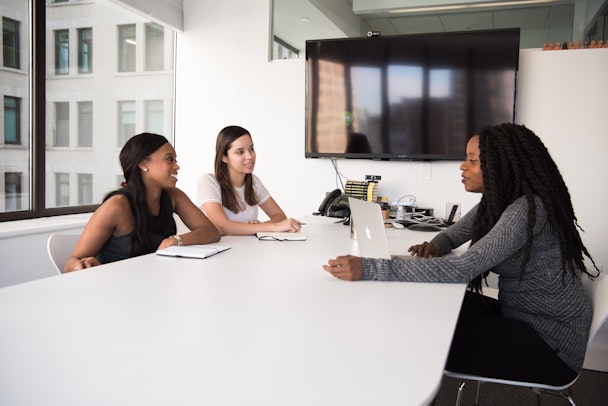Nurturing diverse talent in a post-George Floyd world
There might be a talent crisis, but there’s not a talent shortage. We’re surrounded by talent – and solving the crisis will mean building structures to support that talent in all its glorious diversity. Natalie Traynham, senior vice-president and global director of talent attraction at Momentum Worldwide, looks into the essentials of creating such an environment.

Momentum provides tips on how to hire more diversely and where to source new talent
Along with a global pandemic, social unrest in the wake of George Floyd’s untimely death and a global social justice awakening, the world is now facing a talent shortage.
With over 7.7 billion people in the world, there is talent out there. Businesses just need to know how to find, attract and retain it.
Marginalized and underserved communities
We need to build the next generation of talent in a way that represents the world we live and work in, ensuring the workforce is diverse and representative at all levels. Equity and access are essential in creating a business environment where everyone feels safe and valued.
Intentionality is key. By providing services and initiatives that support diverse employees’ wellbeing and mental health, all employees benefit. Companies all approach wellbeing differently, from juice bars to paid time off policies. These are all great if they are what employees want. People want to work in an inclusive environment where their needs are met, and that they feel like they’re making a difference, and they have a voice.
There’s a Madison Butler quote that says: “You have to design your organization intentionally for the most marginalized person – even if they’re not here yet. Build for them.”
Navigating this world as a Black woman, I see things through a specific lens, along with how I’m perceived by others. I was born in London, grew up in Trinidad and Tobago, and have spent my adult life in Los Angeles. I feel fortunate to have grown up in a country that was diverse, and to have been part of a diverse family. The multitude of my experiences has shaped my worldview and served me well in my profession.
It’s important to have a range of people contributing to diversity efforts and acting as advocates for marginalized and underrepresented people in the workplace. Passion to create equity and access for diverse talent is crucial. Those in diversity and inclusion roles have a much harder job than simply hiring diverse talent and creating programming for Black History Month, Latino Heritage Month and Pride Month.
Inclusive cultures
Creating an environment where diverse voices are heard and feel safe is difficult. No one is singularly responsible; creating an inclusive culture is the shared responsibility of the leadership team. But certain roles can guide the direction that organizations are moving in.
This is a marathon, not a sprint, and inclusion is not a destination you can magically arrive at. It’s a journey where you must learn, unlearn and relearn as an organization. It’s about creating a safe space for learning – both as an organization and as individuals when you get it wrong. It’s welcoming each other as we are and not downplaying or hiding anyone’s differences. It’s allowing unique ideas, experiences and narratives to shape the work that you create and letting those voices challenge biases, preconceptions and privileges.
Building a diverse talent pipeline and an inclusive environment where diverse talent can thrive is essential. ‘Two in the pool’ recruitment strategies ensure that diverse talent KPIs are met. Psychological safety training for hiring leaders and training hiring managers on how to interview without bias can toward inclusivity. In 2020, 26% of our new hires were diverse. We increased that to 41% in 2021, but this is just the start.
Having a diverse workforce will have a positive impact on sourcing, attracting and retaining talent at a time when people know what they want and understand their value. Having a diverse workforce in a client-driven industry means that brands can expect teams who touch their work to reflect the communities they serve – the same consumers they are trying to reach. We don’t need to look any further to see the direct correlation here. There are too many reasons why we are unable to turn back. Recruiting diverse talent is not an initiative or a strategy. It is the way forward. It is progress.
Content by The Drum Network member:

Momentum Worldwide
Momentum Worldwide is a global experience agency partnering with and transforming the world’s most famous brands since 1987. Built on the simple truth that it’s...
Find out more
